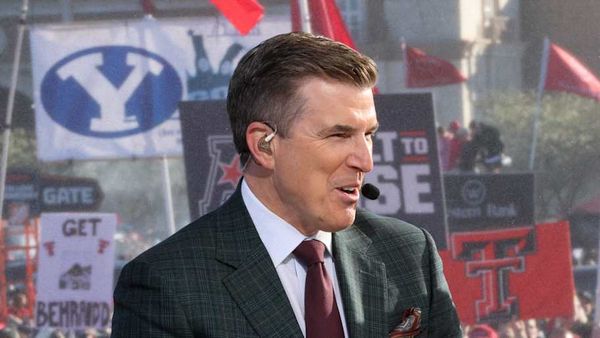
Last week, CVS Health CEO Karen Lynch was pushed out of a role that had made her the most powerful woman in American business for years, atop a company with 2023 revenue of $358 billion.
The company's poor financial performance last quarter and weak profit forecast proved to be the last straw for the CVS board. It had tired of her inability to successfully bring together the different business components of a company that, through a slew of expensive M&A deals, had become a Frankenstein.
Three days earlier, CVS's archrival Walgreens Boots Alliance announced it would close 1,200 U.S. stores in a tough environment for prescription fulfillment and weak retail sales. Many of those soon-to-be-closed locations are presumably part of the 1,932 Rite Aid stores Walgreens bought in 2018 in a $5.2 billion consolation prize deal after failing to buy its smaller rival outright. (At their peaks, CVS and Walgreens had store fleets of nearly 10,000 locations. CVS has also been closing hundreds of stores. Walgreens has not identified which of the stores it is closing are former Rite Aid locations.)
Like its two much larger rivals, Rite Aid also has some M&A egg on its face. A year ago, Rite Aid filed for Chapter 11 bankruptcy protection choking under debt, some $3 billion of it originally stemming from a 2006 acquisition of the Eckerd and Brooks chains. At the time, the big chains were trying to make land grabs to emerge as national leaders in a sector long dominated by independents and small regional chains but hefty interest expenses stymied Rite Aid's investment in stores and ability to build out its health services.
All this M&A-fueled empire building has ultimately failed, and caused the Drugstore Big Three to divert attention away from their core business: operating stores. The underinvestment in drugstores has led them to become unappealing (that’s made worse now, with half of what you want from the front of the store behind lock and key) and dated, and with many Americans opting to get their medication via mail or the drive-thru. And that in turn ultimately damaged all three companies’ efforts to use their thousands of stores as hubs to create broader health care business. Retail sales at all three chains have been weak for years. "Both CVS and Walgreens have been guilty of chasing healthcare dreams at the expense of retail. That shortsightedness is now hitting them hard," says GlobalData managing director Neil Saunders. In a comment to Fortune, CVS said its stores were thriving.
Let’s take CVS. Its transformation from the Consumer Value Stores drugstore chain founded in 1963 to the sixth-largest company on the Fortune 500 began in earnest in 2007, when it bought pharmacy benefits manager Caremark for $21 billion. While that deal proved beneficial to CVS, notably by helping to build a larger mail-order pharmacy and making it a big player in the booming pharmacy benefit manager (PBM) market, later deals were too costly and made CVS too unwieldy to manage effectively. In 2018, CVS paid $68 billion for Aetna (where Lynch had been for years) at a 73% premium. It followed that up with a $10.5 billion deal last year for Oak Street Health, owner of over 200 centers in 25 states providing care for the elderly, and it also acquired Signify Health, a health care analytics provider, for $8 billion. (To be fair, deals like the one to buy Target's pharmacy business in 2015 have worked out well.)
Although Lynch had come from Aetna, acquiring it was not in fact her idea. The plan was hatched by the CEO before her, Larry Merlo, who handpicked her as his successor. But she bought into the strategy full-on. Her idea was to make CVS a one-stop shop for pharmacy services and basic care, thanks to hands-on, data-driven management from its in-house insurer that reminded folks to refill prescriptions and get their annual physical.
Walgreens, in contrast, doubled down too much on physical drugstores for years. In 2014, Walgreens finalized buying British druggist Boots for $22 billion in a bid to create the first international drugstore operator. The architect of that deal, Stefano Pessina, later became CEO and then pushed in 2015 to buy Rite Aid for $17 billion. Two years later, after intense regulatory scrutiny, Pessina scaled down the Rite Aid deal and Walgreens bought 2,000 of its 5,000 stores, many of which overlapped with existing Walgreens and were rather shabby.
Walgreens’ more recent M&A veered away from traditional drugstores but was still not a success. In 2021, it took a majority stake in primary-care clinic chain VillageMD for some $5 billion, only to write down much of that earlier this year after Walgreens decided to scale back the business.
And now Walgreens is closing many of the Rite Aid locations it bought, meaning that deal was akin to setting a good chunk of that $5.2 billion on fire. (Walgreens has also failed to sell off Boots, which had once been thriving but has struggled more recently.) The result of Walgreens’ M&A activity in the last decade is that shares are down 85% from their highs in 2015 when Pessina became CEO.
And now leaders at these chains have to figure out what to make of the haphazard assets they have been left with. At CVS, activist shareholders fed up with the weak stock performance have an idea: Ironically, they are pushing for the company to consider breaking itself up, undoing much of the M&A that took up the last 18 years.







